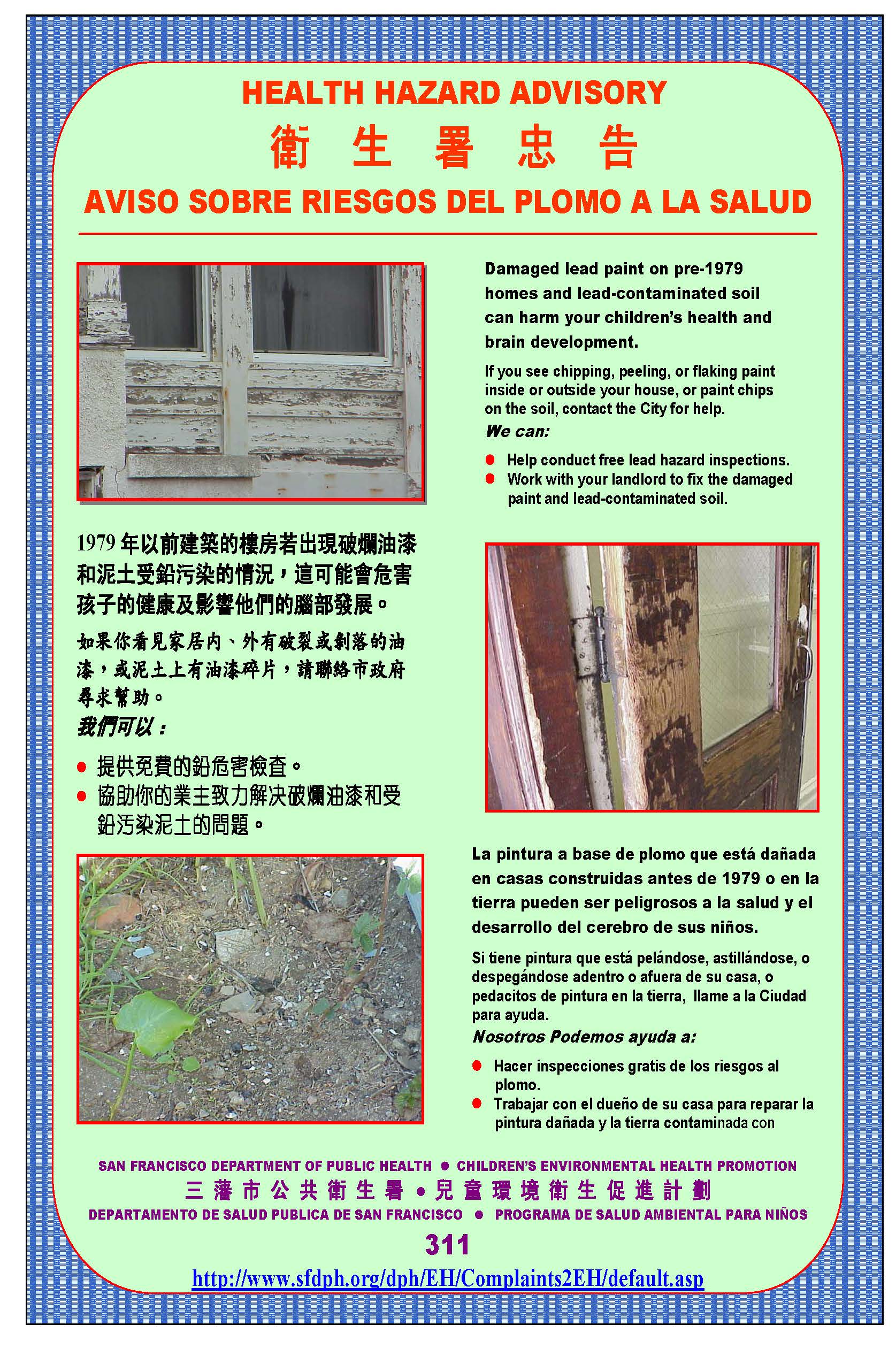- About DPH
- Our Services
- Our Programs
- Healthy Living
- Records, Permits & Licensing
- Knowledge Sharing & Collaboration
- Diseases & Conditions
- Training
Helpful Links
Childhood Lead Prevention Program
Children's Environmental Health Program
Lead and Children
Lead in Housing
Related Documents
Childhood Lead Prevention Program: Tenant Information
- What are lead hazards?
- What are landlords required to tell tenants about potential and known lead hazards when renting housing?
- Landlords must disclose any known lead hazards at the time of signing a lease. If they have not verified that lead hazards exist, they will mark this lead hazard disclosure form as "none known".
- Landlords must provide this booklet (PDF) at the time of signing a lease, and to all existing tenants, so that tenants are informed about how to identify and report lead hazards. This booklet is available in other languages here.
- What are your rights to lead-safe rental housing and how are they enforced?
- What community agencies can help advocate for the right to lead-safe housing?
- What else can you do to prevent lead exposure?
- Tell Your Landlord to use USEPA Certified Lead-Safe Contractors for Renovations and Repairs:
Childproof Your Home Improvements (pdf)
Renovate Right (pdf), en español (pdf) - Learn About Lead-Safe Gardening Practices
- Learn About Lead-Safe Drinking Water

Lead hazards in pre-1979 buildings are primarily caused by lack of maintenance of painted surfaces, leading to damaged and deteriorated paint. Lead content in paint will be released as a dust, which then migrates to other interior and exterior surfaces, including bare soil. Lead hazards are also created by renovation and repair activities on pre-1979 buildings that disturb painted surfaces without properly containing or cleaning up the dust and debris that are generated.
There are numeric definitions of how much lead must be present in paint, dust or soil to receive a violation, but all lead exposure is hazardous to the health of humans and their pets. See this Health Hazard Advisory for examples of lead hazard conditions that you should report to the Department of Public Health Childhood Lead Prevention Program (CLPP).
San Francisco Health Code prohibits property owners to allow lead hazards on their property. If you see badly damaged paint on the exterior or interior of a house, call the Department of Public Health - Childhood Lead Prevention Program (CLPP) at (415) 252-3956. Property owners will be required by CLPP to safely repair any hazards that have been identified. Prevent children from contact with any suspected lead hazards.
San Francisco Building Code requires that work disturbing lead-based paint be done safely. If you see work on the interior or exterior of a building that allows dust and paint chips to spread outside of a work area because it's not properly contained or not properly cleaned up, call the Department of Building Inspection - Housing Inspection Services at (415) 558-6220. Property owners and contractors will be required to halt work until they establish lead-safe work practices, as well as containment and cleanup of lead paint dust and debris.
See the Tenant's Rights and Resources for Safe and Habitable Homes in San Francisco (pdf).
If you are concerned about elevated lead levels in your water, flush your tap for 30 seconds to 2 minutes before using the water, whenever the tap has not been used for several hours. You can have your tap water tested: Call 1-877-737-8297 for more information. A$25 per tap fee must be paid in advance. f you are enrolled in WIC, ask at your WIC office for voucher and water sampling container to get free lead in water testing.
Please complete the Lead Analysis Application and send it along with payment to:
SFPUC Water Quality Division
Attn: Lead Program Coordinator
1657 Rollins Road
Burlingame, CA 94010
Visit the SFPUC web page for more information about lead in water.

